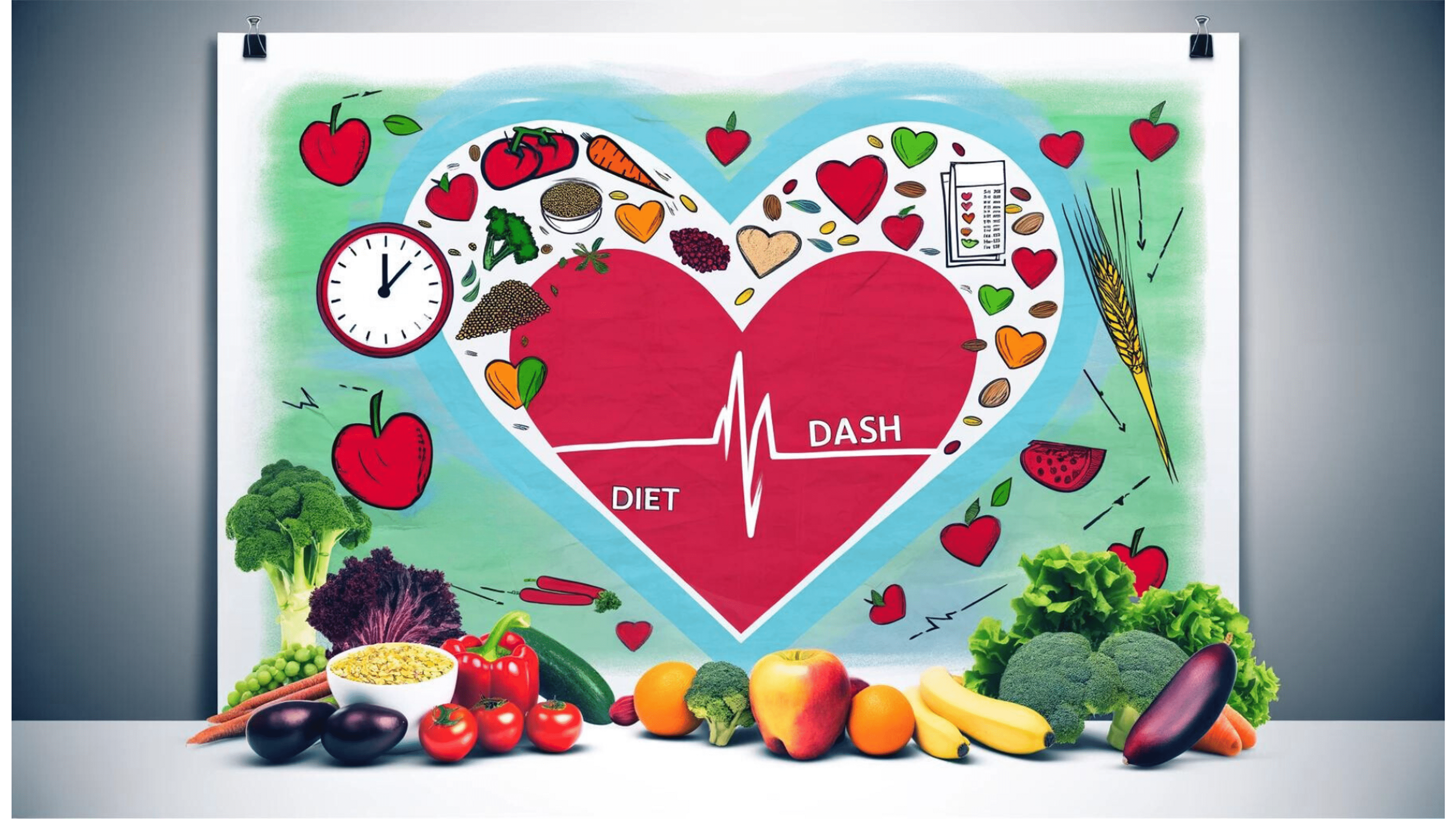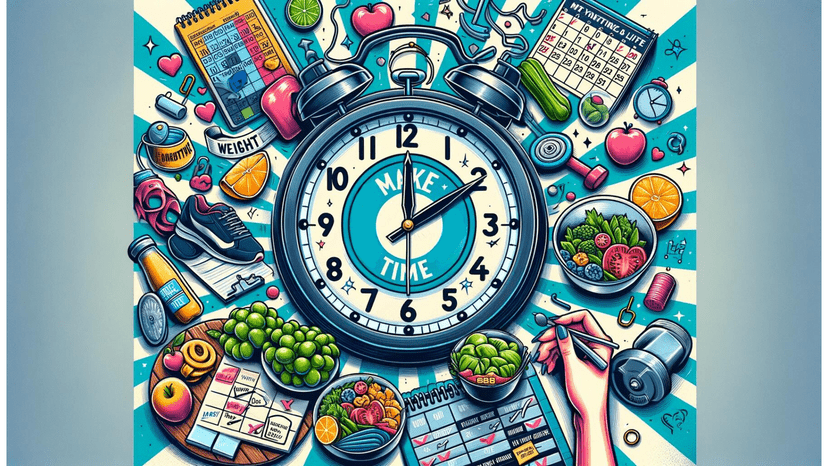
Introducing: the DASH Diet
In the landscape of dietary regimens designed to promote health and wellbeing, the DASH Diet has garnered widespread attention for its focus on managing and reducing hypertension (high blood pressure). Short for Dietary Approaches to Stop Hypertension, this dietary plan spearheads a conscious shift towards food choices that can help mitigate blood pressure levels, thereby playing a critical role in controlling one of the major risk factors for heart disease.
Origins and Principles of the DASH Diet
Developed in the early 1990s via a series of clinical studies spearheaded by the National Heart, Lung, and Blood Institute (part of the National Institutes of Health), the DASH Diet was conceptualized with the primary objective to decrease hypertension. The underlying principles of the DASH Diet are premised on limiting sodium intake and encouraging the consumption of a variety of foods rich in nutrients known to lower blood pressure, such as potassium, calcium, and magnesium.
While the DASH Diet was designed to combat hypertension, it is not a specialised, narrow focus diet. Rather, it is a flexible and balanced dietary approach that aligns with the dietary recommendations to prevent osteoporosis, cancer, heart disease, stroke, and diabetes.
Key Components and Food Groups
The DASH Diet, unlike many trending diets today, is not about excluding specific food groups or endorsing drastic measures. Instead, it is a holistic approach that encourages:
- Consuming fruits, vegetables, and whole grains
- Including low-fat or non-fat dairy products
- Favoring lean meats, poultry, and fish
- Incorporating nuts, seeds, and legumes
- Restricting the intake of sodium, sweets, sugary beverages, and red meats
The primary emphasis in this dietary pattern is to increase nutrients that are linked to lowering blood pressure, like potassium, calcium, protein, and fibre, while reducing intake of high-sodium dishes and processed foods which tend to spike blood pressure levels.
Health Benefits Beyond Blood Pressure
While the DASH Diet's primary renown stems from reducing hypertension, its benefits are not confined to blood pressure management alone. The emphasis on balanced, nutrient-rich food consumption and limited processed foods also offers the potential for weight loss, improving heart health, reducing risks of diabetes and metabolic syndrome, and boosting overall longevity. Embracing the DASH diet could be an optimal step towards holistic health improvement and disease prevention.
Implementing the DASH Diet
Transitioning into a new diet, like the DASH diet (Dietary Approaches to Stop Hypertension), requires thoughtful planning and awareness of new dietary principles. To fully reap the benefits of the DASH diet – including lower blood pressure and improved heart health – it's crucial to approach meal planning, grocery shopping, and eating out with a DASH-friendly mindset.
Daily Meal Planning and Recommendations
Daily meal planning takes into account both the types of food you eat and the frequency of your meals. The DASH diet places a significant emphasis on the consumption of fruits, vegetables, whole grains, lean protein, and low or fat-free dairy products.
Meal planning should include a careful assessment of these food groups to ensure that you are accessing a wide variety of nutrients. At the same time, the DASH diet recommends limiting foods that are high in saturated fat, sugar, and salt.
For instance, you might start your day with a bowl of oatmeal topped with fresh fruit and nuts, accompanied by a serving of low or fat-free yogurt. A lunch suggestion would be a chicken salad loaded with colorful vegetables. To make the salad more satisfying, you can add a few slices of whole-grain bread on the side. A typical dinner on the DASH diet might include a lean protein like grilled fish, a side of quinoa and a selection of steamed vegetables.
Understanding Portion Sizes and Servings
Understanding portion sizes is crucial for following the DASH diet. When the term "portion" is mentioned, it refers to the amount of food you choose to eat at once, which can be big or small – you decide. A "serving" is a specific amount of food, defined by common measurements such as cups or spoons.
The goal is to balance your portion sizes with the number of servings the DASH diet recommends each day from various food groups. The diet's suggested daily servings depend considerably on your daily caloric intake.
For example, according to the National Heart, Lung, and Blood Institute, a person following a 2,000-calorie DASH diet plan should aim for 6-8 servings of grains, 4-5 servings each of vegetables and fruits, 2-3 servings of dairy, and fewer than 6 one-ounce servings of lean meat, poultry, or fish. Maintaining awareness of serving sizes can make the transition to the DASH diet smoother and more successful.
Tips for Eating Out and Social Occasions
Eating out, whether at a restaurant or a social event, can present challenges when following any diet, including the DASH diet. However, with some planning and knowledge, you can still enjoy these experiences while adhering to your dietary goals.
When eating out, consider options that stick close to the dietary guidelines of the DASH diet. These might include lean proteins, lots of vegetables, and whole grain options. Avoid meals that are fried or contain rich sauces, as they might be high in saturated fats and sodium.
Social occasions might entail more control, especially if the food is home-cooked. It's perfectly fine to ask about the ingredients or preparation method, which can help you make informed choices. Also, consider filling your plate with vegetables and lean proteins first before venturing into more calorically dense foods.
Lastly, remember that the occasional deviation won't derail your dietary goals. The focus should be on consistent, long-term commitment.
Challenges and Solutions
When first considering the adoption of the DASH (Dietary Approaches to Stop Hypertension) diet, you might find several outstanding issues such as dietary restrictions, managing cravings and concerns about the budget. These are common and fair challenges to address. This section will provide ways to overcome these hurdles and help you in your smooth transition to a DASH-friendly lifestyle.
Overcoming Dietary Restrictions and Cravings
The DASH diet emphasizes fruits, vegetables, lean protein, whole grains, and low-fat dairy. As you transition to this dietary plan, you may find difficulty in dealing with restrictions, especially when it comes to items high in saturated fats, full-fat dairy and products which contain a high amount of added sugar. There's also the challenge of dealing with cravings for what was once a part of your regular diet.
First, it’s important to gradually phase out high sugar and high-fat foods from your diet instead of an abrupt shift. By slowly reducing your intake of these foods, your body is given time to adjust to changes, lessening cravings overall and mitigating the shock to your system.
Secondly, swap unhealthy foods with healthier alternatives. This will make transition much easier. Craving for something sweet? Try a piece of fruit or a small handful of dried fruits. Missing potato chips? Replace them with homemade kale chips or roasted chickpeas. This method will gradually retrain your palate and adjust your food preferences towards healthier options while satisfying your cravings.
Budget-friendly Tips for Following the DASH Diet
Maintaining a healthy diet can sometimes seem expensive but it doesn’t have to be. Here are some budget-friendly tips:
- Buy seasonal produce: Fruits and vegetables that are in season are usually cheaper and fresher. You can also stock up and freeze them for later use.
- Use cheaper sources of protein: Lean meats can be costly. Opt for cheaper sources of protein like beans, lentils, and eggs.
- Prepare meals at home: Eating out less frequently will result in a significant cost saving and ultimately favors your adherence to the DASH dietary guidelines.
Maintaining Long-term Adherence and Lifestyle Changes
The DASH diet is not simply a diet; it's a lifestyle change. This is the most challenging part, but also the most rewarding.
Creating a meal prep schedule makes the diet easier to stick with and ensures that you have DASH-compliant meals on hand. Consistency is key, and by repeating the process, following the DASH diet becomes less of a chore and more of an ingrained habit.
Finally, remember that balance and flexibility matter. The DASH diet recommends certain food groups and servings, but there's flexibility within those guidelines. Use this to your advantage by incorporating foods you enjoy and to stave off potential monotony from a too stringent diet.
By addressing these common challenges, this information can guide you to a successful and sustainable transition to the DASH dietary lifestyle. These solutions offer practical ways to manage dietary restrictions, manage cravings and stay on budget, with a strong emphasis on long-term adherence to create a lifestyle change that benefits your health for years to come.
In Summary
We've discussed in detail about the origins, principles, key food groups, and benefits of the DASH Diet or Dietary Approaches to Stop Hypertension, a dietary model with a scientific foundation. The main virtue of this regimen is its ability to decrease hypertension, but it also provides additional health benefits like reducing risks of diabetes, heart disease, and promoting overall longevity. Furthermore, we’ve reviewed some recommendations to make a successful transition to the DASH diet, providing meal planning ideas, tips for eating out and social occasions. We also addressed the challenges potentially encountered when following the DASH diet along with solutions to manage these hurdles.
The plan of action now requires thoughtful planning and conscientious effort. Here are action steps to successfully implement the DASH diet:
- Education: Understanding the key principles of the DASH diet, like reducing sodium intake and increasing consumption of nutrient-rich food
- Meal Planning: Include diverse food groups in your daily meals i.e., fruits, vegetables, whole grains, lean proteins, low-fat dairy, and minimize high-sodium and processed foods
- Portion Control: Understand and implement serving sizes as per the DASH diet recommendations to balance daily nutrient consumption
- Mindful Eating-Out: Choose DASH-alignment meals in restaurants, ask about ingredients, and prefer lean proteins, vegetables, and whole-grain options
- Gradual Dietary Changes: Phase out high-sugar and high-fat foods gradually, and replace them with healthier alternatives to mitigate cravings
- Budget Planning: Use cost-effective resources to maintain the diet such as buying seasonal produce, opting for cheaper protein sources, and primarily cooking at home
- Lifestyle Changes: Accept that the DASH diet is a lifestyle change, not an ephemeral diet. Maintain consistency, prepare meals in advance, and practice flexibility within the guidelines.
By combining knowledge, planning, practice, and a mindful approach, you can successfully transition to the DASH diet and reap its far-ranging benefits. This lifestyle change can help foster a healthier, balanced, and productive life while also aiding in the management of long-term health risks. Remember, the goal of the DASH approach is not just to ‘diet’, but to cultivate sustainable, healthy eating habits that will positively impact your wellness journey.




